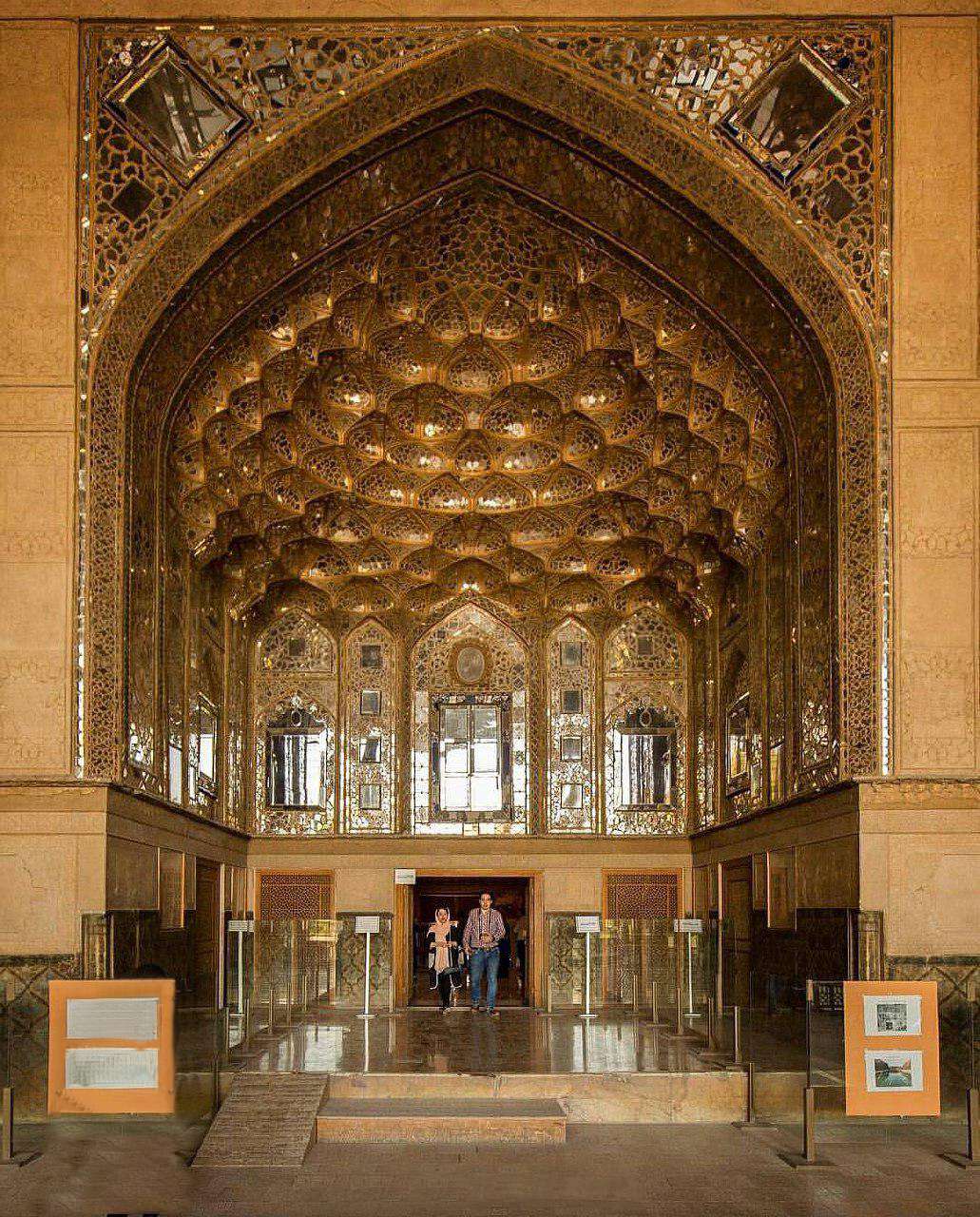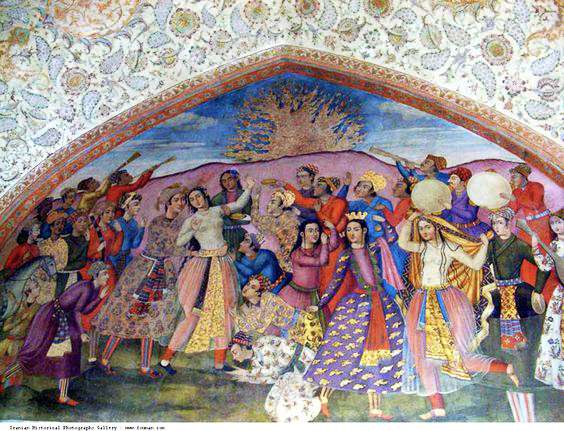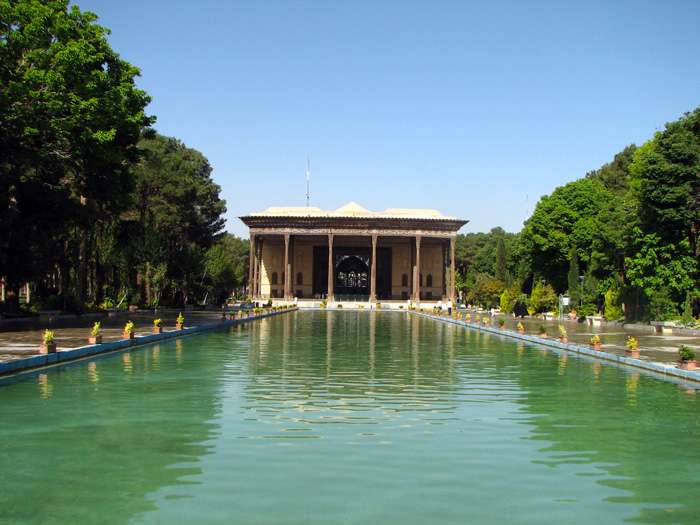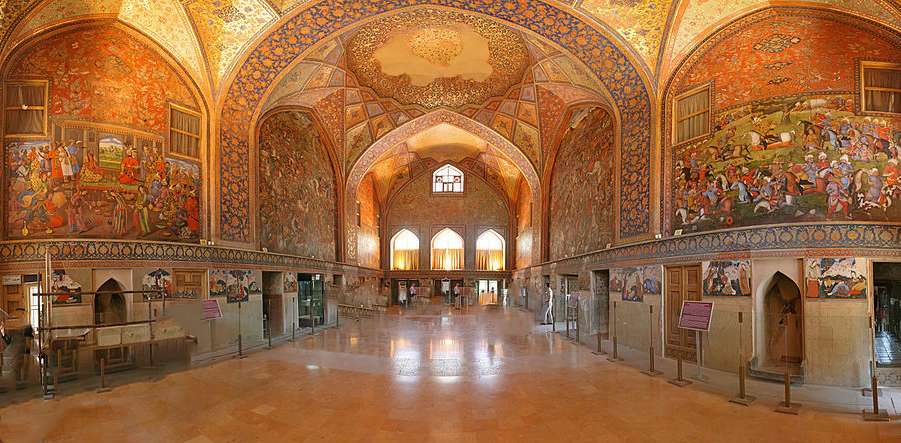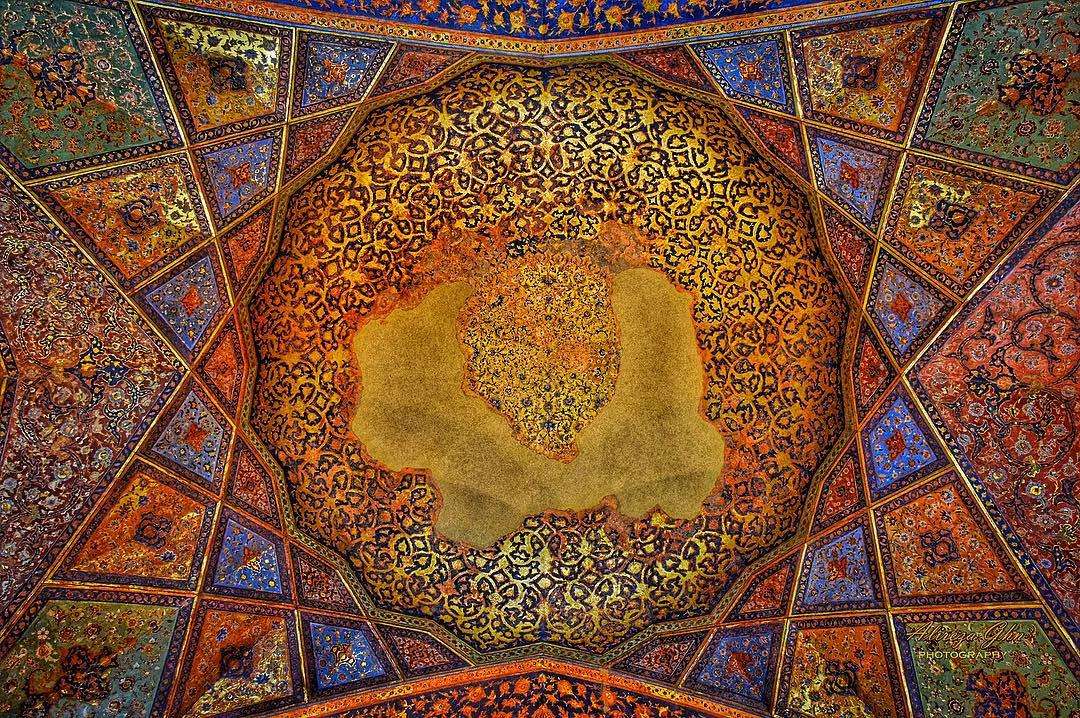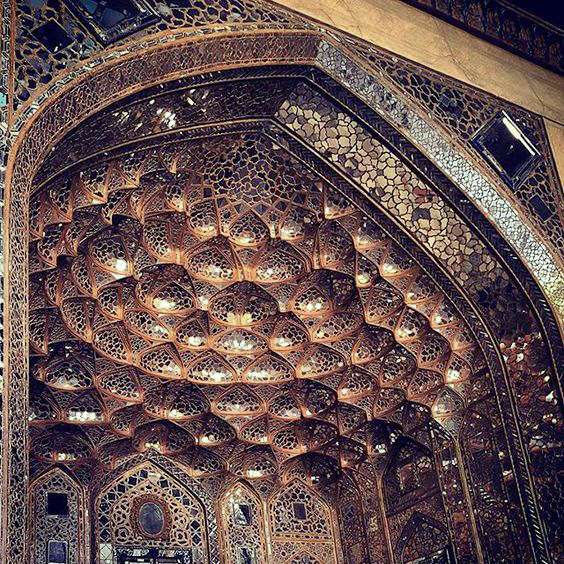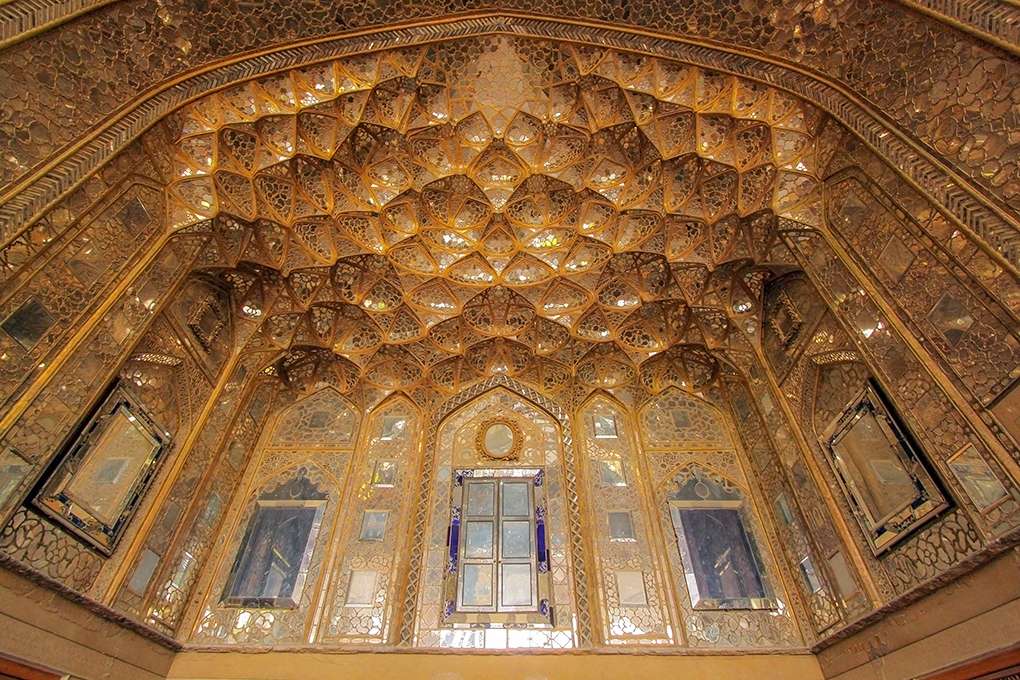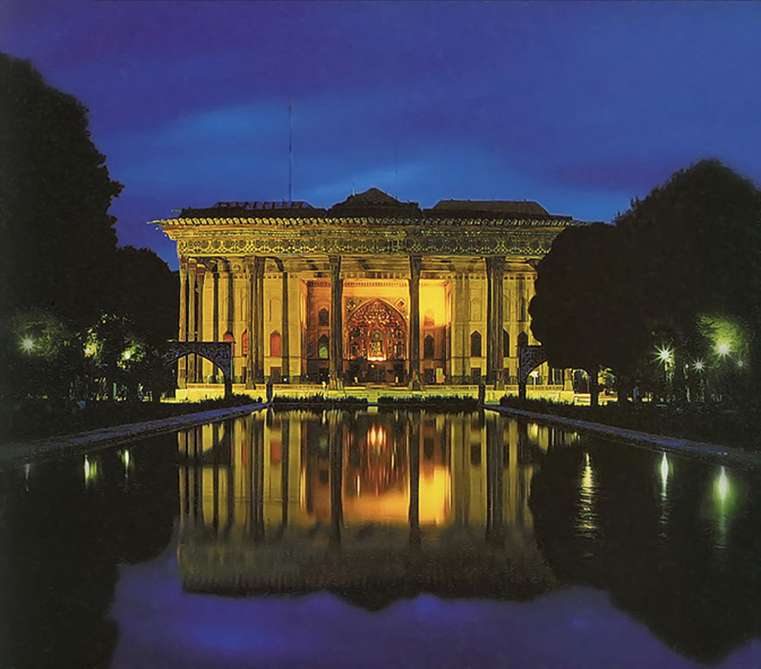Chehel-Sotoun Palace

- Visiting
Chehel-Sotoun Palace in Isfahan
- ThemeHistory and Culture
- CodeIRSG18
- Duration1 hr(s)
Wandering in the UNESCO heritage site;
Visiting the Safavid palace of Chehel-Sotun dating back to 370 years ago.
- Spring9:00-16:00 *
- Summer9:00-16:00 *
- Autumn9:00-16:00 *
- Winter9:00-16:00
* Best Time
Photos of the Chehel-Sotoun Palace
Virtual Tour
Explore the Chehel-Sotoun Palace
Chehel-Sotoun Palace
Persian garden reflects the rich knowledge of architecture, irrigation, and agriculture used by Iranians during long periods of history. It is omnipresent in Persian literature, music, and painting, preserving a special place in Iranians' unconscious. Persian gardens, generally rectangular in shape and enclosed within high walls contain symmetrical trees, water channels, and stone fountains. One of the most remarkable features in Persian gardens is its division to four sections, which is formed when water streams cross. This design is accompanied by a special building named pavilion (Kooshk in Farsi). They are located in high places, like hillsides, mostly to supply lower temperature, more airflow and, water sources like fountains or rivers. We see porticoes(ayvan), around the building to make a strong connection with the garden's beauties. All these told features may be different in detail in each garden, but they are the same in basics in most cases.
Chehel-Sotun garden is one of the most famous gardens in Iran, thanks to its architecture, its lavish pavilion, and also its history. It was constructed by the order of Shah Abbas I, and then enlarged and completed in Shah Abbas II era in 1647, to receive the royal guests and high ranking authorities. Major restorations were done later in 1706, after the very fire of the palace in Shah Sultan Hossein era. As it is typical of Persian gardens, when you enter from the eastern portal, a long pool, leading to the central pavilion, catches your eyes. It is a 110-m-long pool, decorated with figurines of angles, the symbols of guardians, and of lions, the symbols of power. These are column bases transferred here from the now destroyed Safavid palace, Sarpushideh. In the past, a branch of Fadan Madi (madi refers to the small streams passing through Isfahan City) used to provide the water supply of the garden, circling around the palace and through its small pools and fountains. Take a walk among the impressive pine and plane trees (you might be pushed to cover all the 16 acres though) and meander through the landscaped paths to visit the 400-year-old fallen trees.
Highlights
- The Pavilion
The Pavilion
The original pavilion was built during the reign of Shah Abbas I (1588-1629). This two-storey structure consists of a main hall, four rooms and two verandas on the eastern and western sides of the pavilion. In Shah Abbas II era (1642-1666), two rooms on the northeast and southeast of the hall, two verandas on the north and south of the hall, and two columned verandas on the eastern side of the palace were added. The palace, in its current state, contains 10 rooms. On the second floor, there are also four rooms in which women and servants lived.
The columned veranda, also known as the Columned Hall, holds 20 columns, inspired by the Achaemenid style of architecture. The name Chehel-Sotun (meaning forty columns) may refer to the addition of these 20 columns to their reflection in the pool or 40 may suggest the plentitude or perfection figuratively. The entire veranda is decorated with fret-work, mirror work, and paintings. There used to be a big mirror located on the main veranda, called Jahan-Nama, which reflected in itself the magnificence of the garden and the pool. Towards the end of the Qajar era, Zell al-Sultan ordered the mirror to be transferred to Masoudieh Palace in Tehran. Two of the twenty columns are in the recess connecting the veranda to the Main Hall, or the Throne Hall. The space supported on these two columns is elaborately adorned with 16th-century Venetian mirrors; the reason for naming it the Mirror Hall. Behind the Mirror Hall, you will find the splendid Throne Hall, also known as the Main Hall, with a high vaulted ceiling covered with the finest Safavid designs and decorations. The hall is mostly remarkable for the large frescoes painted on the upper part of its walls on both sides, three of them on the eastern side and the other three on the western side. The paintings belong to the Safavid era, except the middle ones on both sides, which are Qajarid works in Ghahveh-Khaneie genre, painted over the original Safavid ones. The vividly-colored frescoes depict scenes of battles and royal feasts. The right fresco on the western wall depicts the feast of Shah Abbas I to welcome Vali Mohammad Khan, the ruler of Turkestan. The one in the middle depicts the Battle of Chaldiran between the troops of Shah Ismail and the Ottoman Army, in which the Safavid army, despite their great dignity, was defeated for the first time. The fresco on the western wall shows the reception ceremony given by Shah Tahmasb I to honor Homayun, the deposed Indian monarch who later on restored to the kingdom with the help of the Safavids. The right fresco on the eastern wall shows a scene from Taher-Abad battle in which the troops of Shah Ismail I defeated the Uzbeks headed by Shibak Khan. In the next one you see Nadir Shah Afshar against the Gurkanid Muhammad Shah in the Battle of Karnal; and finally, the left fresco on the eastern wall depicts the reception ceremony given at the time of Shah Abbas II in honor of Nadir Mohammad Khan, the ruler of Turkestan. The lower part of the walls is decorated with Safavid miniatures.
In a symmetrical room on the other side of the hall, known as Chahar-Shanbeh Suri (an ancient Iranian feast celebrating the last Wednesday before Nowrouz), there is a fresco which gives its name to the room. With a huge fire on a mountain in the background, the fresco represents a woman being carried by a joyous group of people, blowing horns, dancing and celebrating. Two stories are attributed to this fresco: one version says it depicts the wedding ceremony of Reza Qoli, son of Nader Shah Afshar, to an Indian girl, the other connects it to a tragic historical event, a girl setting herself on fire after the siege of Bukhara by Shah Abbas II.
In the northern and eastern verandas, you see portraits of foreign dignitaries, works by Angel and Lokar, two Dutch painters. It is good to know that two beautiful painted doors from the Chehel-Sotun palace are preserved in the Art Museum of Detroit, USA. The other beautiful inlaid doors of the hall are kept in various museums around the world, such as the Metropolitan Museum of Art and Victoria and Albert Museum.
On the way out, have a look at the garden and imagine that long ago everything was prepared here to welcome Queen Elizabeth I but she failed to come because of the following story. In the Safavid era, Queen Elizabeth I decided to visit Iran. After much thought, Chehel-Sotun Palace was chosen as the right place for her accommodation. So, a room, in the northern hall of the palace, was chosen and orders were sent to have this room highly decorated. To accomplish this feat, a highly majestic carpet was woven first and, then, the ceiling was painted in accordance with the patterns of the carpet. Furthermore, it was decided that the garden should be covered with grass and it became covered with grass, for the first time in its history, but the excessive use of fertilizers gave rise to such a stench that the Queen's residence in the palace was canceled altogether.
Close to the gate, there are several objects, some of them are remnants of the Safavid palaces like Sarpushideh and Ayeneh-Khaneh, which deserve a close look. Exiting the gate, you can browse the flanking buildings of Chehel-Sotun which were mostly the official Safavid buildings: Talar-e Teimuri which houses the Natural History Museum of Isfahan now; Ashraf Hall, a Safavid hall currently serving as the guesthouse of the governorate of Isfahan; Rakib-Khaneh and Jobbeh-Khaneh buildings; two Safavid palaces commissioned by Shah Abbas I and restored by the order of Zell al-Sultan which have turned to the Museum of Decorative Art and the Contemporary Museum of Art respectively.
Important Information
Additional Info
You can attend the festivals and events held in the garden on special occasions such as Isfahan Day (23 April)
Cost Info
- Beryani Azam Restaurant 4 €
- Chehel-Sotun teahouse2 €
- Destination
- Transportation Type
- Transportation Fee---
